遗落的“工业标本”
◇ 文 | 本刊记者 图 |
Article | Hu Ting Han Xi Pictures | You Yu
重庆这座“西南地区最大的工商业城市”的记忆,总是若隐若现,直到走进綦江区三江镇的重庆四钢厂,我们有幸一睹布满年代烙印的“工业标本”。
这里曾是一方热火朝天的工业基地。岁月流逝,工厂里机器轮转的轰鸣声已消失殆尽。然而老厂房、车间、铁轨、家属院,甚至一草一木尚历历在目,给了我们寻回三线建设记忆的线索。
Our memory for Chongqing—the largest industrial and commercial city in Southwest China—did not become clear until we visited Chongqing Fourth Iron and Steel Factory(CFISF) which is located in Sanjiang County, Qijiang District.We were lucky to witness the historical“industrial specimen”.
The factory was a significant industrial base but it has been dilapidated as time went by. However, following the clues of the old plant, workshop, railway,residential building and even vegetation here, we got opportunities to find back the memory for the Third-Front Movement in Mid-west China in 1960s.
存留的轮廓Existing Outline
从距重庆主城巴南出口仅半小时车程的兰海高速三江站下道,循着“四钢记忆”指示牌,沿着长坡往下一公里处,就是四钢厂。这里占地近600亩,建筑面积13万平方米,是一个有着80年历史的老工厂建筑群。
四钢厂的前身始建于1937年。1965年,重庆钢铁公司第四钢铁厂正式成立,曾经历多次改制重组,2012年底,因经营困难,全部停产。2014年4月,四钢公司与重庆安全产业发展集团有限公司进行资产重组,成立了重庆安源金属制造有限公司。当时,一部分老四钢人选择到长寿、大渡口等地的重钢厂上班。另一部分,由于家在綦江,所以选择留在了安源。
周新禹就是其中一个。他领着我们走进了曾经的厂房区。一间间空荡荡的破旧厂房,安静伫立。外墙上挂着机器牙箱,有的地方红砖脱落,有的地方爬满了绿植。随处可见漆有“四钢生产车间杆路”的电杆,锈迹斑斑的绿漆青年文明岗亭……眼前的景象,丝毫没有今时的人为添加,原汁原味保留了上世纪六十至八十年代的样子,在国内已不多见,许多剧组相中了这里。
我们走访时,电影《十七岁的轻骑兵》正在四钢厂里拍摄,讲述的是上世纪九十年代,国营厂青年技工的故事。在此前,《钢魂》《追踪》《幸福照相馆》《同路人》等影视剧,也相继在四钢厂完成了实景拍摄。
Driving off the Lanzhou-Haikou Expressway, you may find CFISF following the sign of “四钢记忆(Memory for CFISF)”. Covering an area of nearly 600 mu (40 hectares), the old factory architectural complex boasts a building area of 130,000 m2.
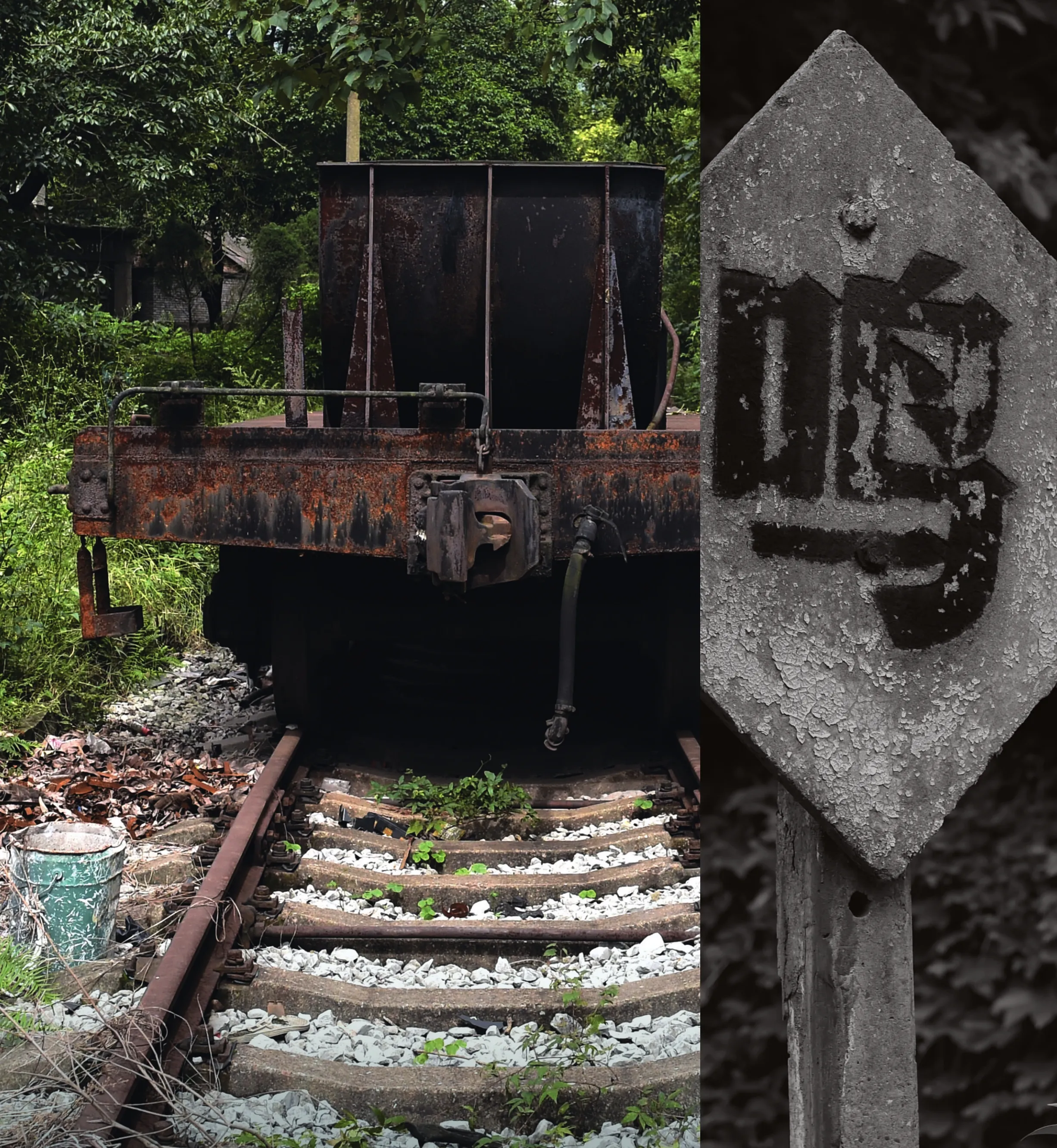
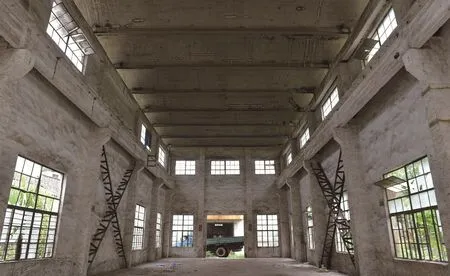
CFISF was formally established in 1965 and underwent numerous restructuring. In April, 2014, the factory recapitalized with Chongqing Security Industry Development Co., Ltd. and founded Chongqing Anyuan Metal Manufacturing Co., Ltd. Some employers of the factory chose to work at the mills of Chongqing Iron and Steel Company (CISC)in Changshou District and Dadukou District, while the other stayed in Anyuan Company for their family.
As an old employer of CFISF, Zhou Xinyu guided us to the original plant area. Empty workshops, abandoned gearboxes, dilapidated red bricks and rusty watch boxes witnessed the development from 1960s to 1980s and were well reserved. A lot of film groups chose this old site as their shooting place.
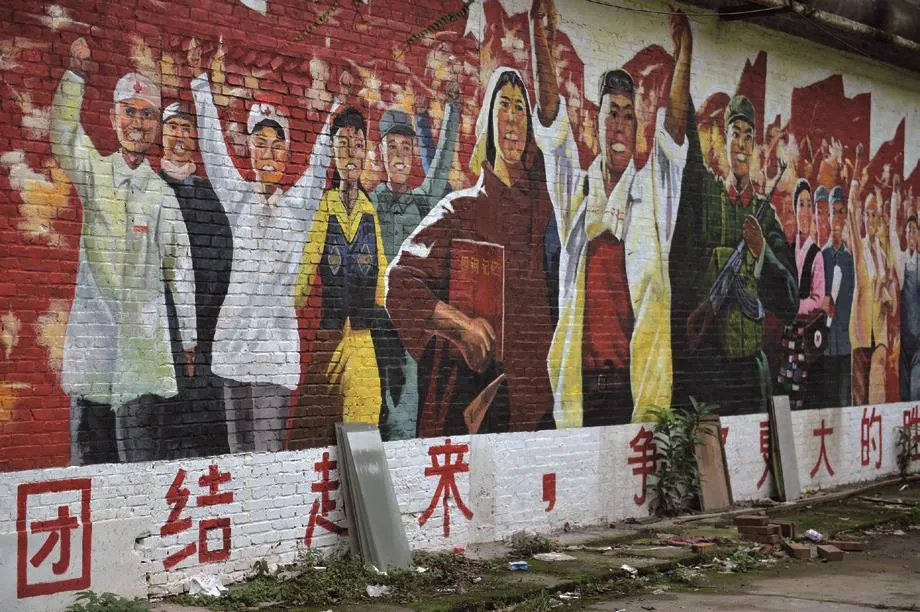
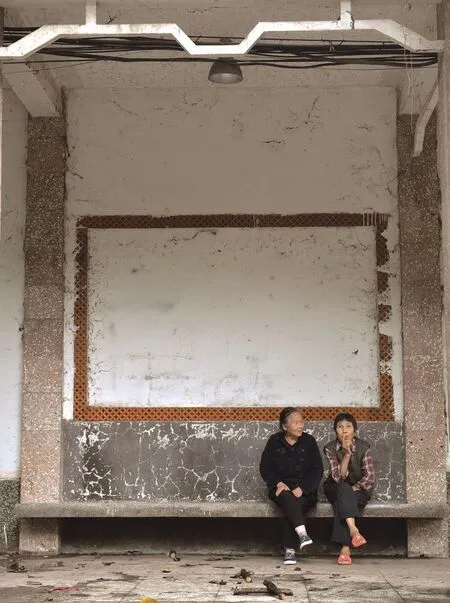
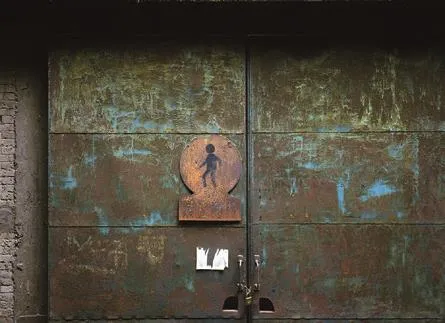

During our visit, a movie telling a story about young technicians in the 1990s was being filmed on location in the factory. Additionally, several TV plays were shot here, such as Iron Soul, Tracing,Happy Photo Studio and Fellow Traveller.
曾经的重点Old Priority
看着剧组在厂里搞创作,演绎往事,周新禹“恍如隔世”。
1996年,24岁的周新禹从部队转业,分配到了四钢厂,成为一名热轧机操作工,就再也没有离开过。
在一幢厂房前,老周停了下来,透过绿漆的铁门栅栏往里望去,地上长满杂草,墙角边堆放着废弃钢材。当年,这是四钢厂的薄板车间,也是四钢厂最大的车间,里面横向依次摆放着四台热轧机,专轧薄板。
“机器一天到晚都开着,忙的时候,食堂直接送饭到车间,工人们轮流吃饭,吃完接着干。”说着说着,他的音调不自主地高了起来。
上世纪八九十年代,四钢厂曾是綦江数一数二的大厂,固定资产8400万元,还有585台生产设备。正式工加上机修厂、联镀车间等十多家辅助单位,有两三万职工。那时,四钢厂的钢铁生产技术走在国家前列,其生产的冷轧镀铅板还获得国家银质奖,并成功研制出具有当时国内先进水平的新型硫酸雾净化器。
“那时候效益好,我们的工资就有300元。”周新禹有些唏嘘,他走到锈迹斑斑的铁轨上,轨道两旁长满了芦苇。这条从厂区内穿过的铁轨是上世纪五六十年代修建的,一直延伸到三江火车站,“从这里开始,火车将钢材运到火车站,再南下,运往贵州、广州等地。”他听说,铁轨还运送过蒸汽机,后来又改成了绿皮火车。
从铁轨上运出的钢材,还肩负过特殊的时代使命。
上世纪六十年代初,错综复杂的国际环境,使得国家急需加强战备,调整经济发展布局。1964年9月21日,全国计划工作会议上正式宣布三线建设的目标和布局。重庆有着较强的工业实力和符合需求的地理优势,因而成为三线建设重点地区,当时的目标是以重钢为原材料基地。顺理成章,四钢厂也就成了重要的钢材输出地。
Looking at the film making in the factory,Mr.zhou felt as if being cut off from the outside world for ages.
Zhou Xinyu was assigned to CFISF from troops in 1996 and worked here as a hot mill operator until retirement.
He stopped at an old workshop. The gate fence of green paint gave glimpse of abandoned steel products around weeds. Here is the place where CFISF made thin plates and four hot mills were displayed once.
“Machines operated the whole day,” Zhou remembered, “When it comes to the peak period in production, workers were so busy that they had to have their meals in turn and continued to work after that.”
With 585 manufacturing equipment and fixed assets amounting to 84 million Yuan, CFISF was one of the largest factories in Qijiang in the 1980s and 1990s. It boasted nearly 30 thousand employees and more than 10 support units. The steel manufacturing technology applied in the factory topped the nation and its cold-rolled lead plate won a national award.Besides, the working staff of the factory developed an advanced type of sulfuric acid mist purifier.
“We could earn 300 Yuan each month during that prosperous period,” Zhou said. He then came to the rusty railway which was built in the 1950s and stretched to Sanjiang Railway Station. “Steel was transported to provinces and cities such as Guizhou and Guangzhou,”Zhou said. He heard that steam engines and green trains were also carried through the railway.
Steel from CFISF shouldered special mission.

The complex international environment in the early 1960s forced China to strengthen its armaments and adjust the economic development layout.National Plan Working Conference, therefore,formally announced the aim and overall arrangement of the Third-Front Movement on September 21, 1964.As Chongqing enjoyed superior industrial power and geographical advantages, it became a priority in the Movement and aimed at taking Chongqing Iron and Steel Company (CISC) as a raw material base. Thus,CFISF emerged as a crucial steel production base.
是厂也是城Factory and Town as a Whole
四钢厂依山傍林,靠着綦江河的河湾修建,因为远离城区,加上职工和家属人口众多。特殊的情形使得厂区内生活设施一应俱全,一座厂同时也是一个“小城镇”。
我们走出厂房区,来到生活区。这里没有都市的热闹嘈杂,时间的脚步静而缓慢。上百户不愿出走的老四钢人仍在这里延续着日子,只是不用再去厂区了。居民楼下,人们搭根板凳,坐在一起,端着茶杯,闲聊打发时间。
曾经,生活区外开满了茶馆、电影院、台球室等工人的娱乐场所。如今这些地方都在,但早已不是那时的光景,更像是一张张书签,标记着过往在此停驻。
周新禹印象最深的是,每年春节期间,整整一个月,生活区的梯子、道路两边的树上,都挂着各色各样的彩灯,是三江镇最漂亮的。晚上,附近的三江钢水厂、103厂都有人专门到四钢来看灯。

2000年后,这些彩灯就从周新禹的视野中消失了。属于“大时代”的三线建设,不再适应新的发展。四钢厂和它众多的“同期”一样,逐渐消声。不太一样的,或许是这里保存的“标本”更为完整,画面更加清晰。
周新禹现在在安源公司,负责生产高速公路护栏板,办公地点仍在四钢厂里面。在周新禹和老工人眼中,工厂没有了机器运转,就不再有生气。二十多年未曾走出去,他不太明白,为什么总有人愿意来参观废弃的钢厂。他停顿了一下,突然说起:“当初搬厂的时候,机器都当废铁卖了。要是热轧机留着,至少可以看看以前的工艺 。”
Leaning against mountains and forests, CFISF erected beside Qijiang River, away from urban area.Due to armies of working staff and their families, the plant area boasted complete living facilities, making it a “small town”.
We wandered out of the plant area and came to the living area. Different from noisy metropolis,hundreds of households still continued their lives in this tranquil area, having no need to commute between the two places. Residents gathered beside the residential buildings, drank tea and chatted with each other to kill time.
The living area was studded with entertainment venues such as tea house, cinema and snooker room.Although they are still in operation, people tend to regard them as historical labels.
What impressed Zhou most was various colorful lanterns hanging on the trees along ladders and roads during Spring Festival, which would attract workers and residents from neighboring factories every evening.
These lanterns, however, has disappeared since 2000. The Third-Front Movement, which featured the “Big Era”, was not compatible with the development in new times. Thus, CFISF and its counterparts gradually walked out of the limelight.But the former presented a well-reserved and clear historical picture for the public.
Currently, Zhou is responsible for the manufacturing of highway guardrail board in Anyuan Company which is still located in the old site of CFISF.Zhou and other old workers believe that a factory will no longer be vibrant without machines in operation.He struggles to figure out the reason why people would like to visit the dilapidated factory. “Machines were sold out when we relocated the factory,” Zhou sighed, “At least you could witness the previous technology if hot mills were left here.”

